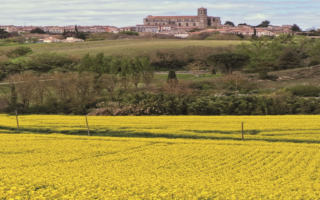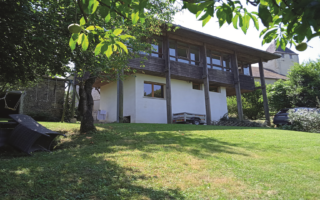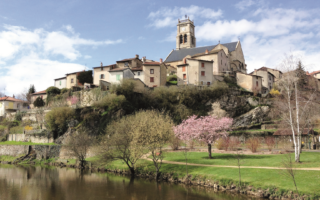Le Manoir Reborn
Community
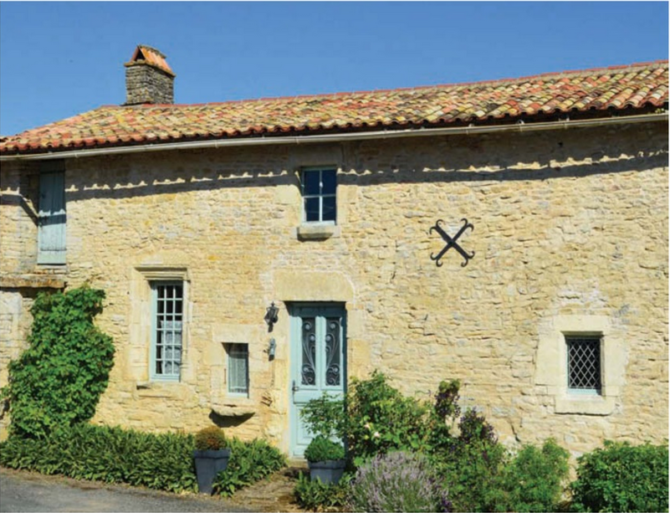

Justin Postlethwaite talks to the owner of a gîte in Poitou-Charentes, Le Manoir des Couts, about restoring the 16th-century manor house…
FrenchEntrée Magazine: Can you tell us what drew you to Poitou-Charents?
Francine Dunkley/ We used to live in Scotland so we needed our regular dose of sunshine. We often went to Provence out of season but we felt it would be too hot, busy, expensive and too far down south to actually settle there. On one occasion, we went to Portugal and stopped over in Poitiers. We all felt that this university city was rather pleasant – plenty of history, culture and interesting heritage, it even had a few art galleries and is within easy reach of Paris and London.
Poitou-Charentes is southern but still ‘green enough’ – it’s said to be the second sunniest area in France and it looks like we aren’t the only ones to have noticed these positive points since the Charente-Maritime département has just overtaken the sout of France to become the favourite holiday destination for French people. The Deux Sévres, just next door, has so much amazing heritage, yet it’s still a ‘best kept secret’, off the beaten tourist track, so property is very affordable and it’s still possible to find little gems!
FE: Is Le Manoir des Couts your first French property and what’s your background?
FD: We first bought a typical ‘maison poitevine’ in a Vienne village, with the plan to create a gite and to continue our artistic activities – Keith trained at the RA schools and I did a ‘Masters’ at the Edinburgh College of Art. However, to create a gite in our barn, we needed the land next door which, of course, got sold to someone else.
Five years later, we searched for the character house that we really yearned for and purchased a 16th-century ‘ruin’ – it had no windows, water, electricity or sanitation, the roof needed to be redone and everything inside, but it had tons of character. Being gluttons for punishment and since this couldn’t accommodate a gite, three years later we searched again. While walking past an estate agent in Poitiers, I spotted an interesting house in the window so we contacted the agent for a visit. Much to my surprise, he took us to the nearby house I’d already spotted but hadn’t recognised from the picture. You can’t argue with fate!
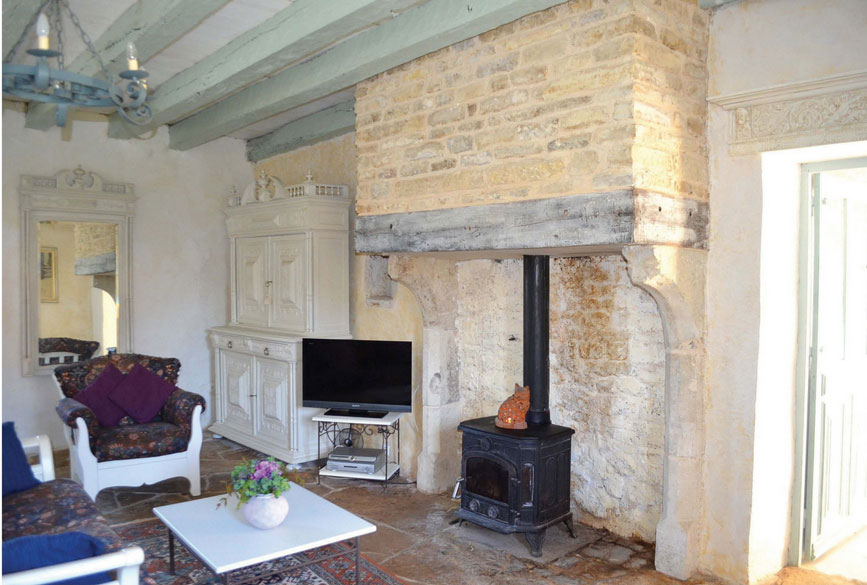
FE: Tell us a little about the property…
FD: Le Manoir des Couts is situated in a tiny hamlet, two miles from our home in the Deux Sévres département. Of course, it came with a little bit of land plus barns and outbuildings. Although it was in a very sad state, we instantly recognised the beautiful features that confirmed it was probably as old as our own home – namely a beautiful carved window on the front facade, another one facing it and several chamfered windows. Inside, we were impressed by the amazing puzzle of irregular, astonishingly huge flagstones, and the big, hand-hewn beams which were painted orange at the time!
We had some nice surprises: stone seats inside the 16th- century window and an amazing arched stone sink had both been walled in, and a beautiful carved window on the garden side was hidden under vines. I went to the DRAC (Direction Régional des Arts et de la Culture) and found a very full file on our home, so I continued searching and confirmed that it actually was a little 16th-century house. It was built between a Celtic enclosure and a spring, to which a legend involving a fairy and a Carolingian knight is attached.
bombshells are almost to be expected too. During a very rare snowy period, we decided to go and check if everything was okay in the house and the attic, and discovered with horror that one of the two tie beams had cracked! The whole weight of the roof was resting on the second tie beam. As it turned out, the original ‘tall’ roof had probably been replaced during the 18th-century but built with a major error – the little space between the ‘king post’ and the tie beam was missing so the weight of the roof was resting on the latter instead of being spread out evenly. We dashed to the nearest carpenter but weren’t happy with the metal-based solution he suggested. Luckily, we found a brilliant local artisan, who we later found out does roofs for châteaux and towers, and his workers went and cut two oak trees, crafted new beams then skilfully installed them in the attic. Although the bill was perhaps a little bit higher than the first estimate, we’re so pleased to have two lovely new beams and the roof will now last a few more centuries!
FE: What were your main challenges and what workmen did you use, if any?
FD: When we bought our home, we knew nothing about ‘character’ stone properties but were told that several walls needed consolidating and many carved stone elements had to be replaced, so it became evident we had to find specialized, highly skilled artisans. Luckily, we found a company which worked on many châteaux, run by a very dedicated artisan who advised and even showed us how to apply lime render to the walls. We realised we had to learn to become ‘untrendy’. We’d heard of so many people restoring French stone houses who proudly announced that they’d taken the lime render off, to get back to the ‘original stone wall’.
The problem is that these stone walls never were meant to be left bare. They usually were built with lime or even earth, not jointed but covered by a thick render of lime for better protection and insulation. A lime wash was then regularly applied for its fungicidal and insecticidal qualities, and to give more light. In some châteaux you might even notice that the best quality ‘tuffeau’ stones have been covered by lime and red lines painted to fake stone patterns! We decided that we’d respect these traditions, which also happened to be ecologically correct, and of course restored Le Manoir des Couts with the same ethic.
We’d advise any one who has to find artisans in France to make sure that they’re fully registered and insured, and get as many quotes as possible as we’ve seen colossal rate differences. Surprisingly, highly skilled artisans aren’t necessarily more expensive that the less experienced but more profit-seeking ones.
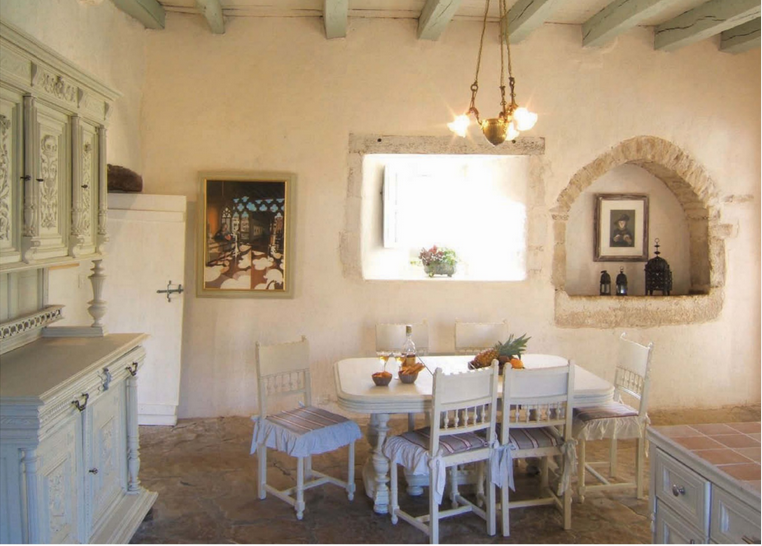
FE: Who did the planning and design?
FD: We did. The house had been divided into two – what’s now the door to the living room was walled in and so was the carved window looking onto the garden, and one of the double bedrooms was the previous owner’s kitchen. No doubt we could’ve re-designed the house differently but it’d be easy for any future owner to change things round, as partitions can easily be removed.
FE: What was your interiors inspiration?
FD: We watch many programmes on French and British TB channels about restoring, buying and selling houses but often strongly disagree with trends, which don’t fit our ethics. More than ever we are all subjected to trends, as the ‘colossal consumption machine’ attempts to convince us that what we have in inadequate and should be replaced with something new and totally different – potentially, out of a container from the other side of the world. We all succumb, sooner or later, but if or when we realise how silly and impractical our new acquisition is we think twice about the next change.
We feel that it’s important to offer a stay in a typically French atmosphere, rather that the ‘trendy but universal’, bland ‘superstore’ style. We love and admire the skills involved in sourcing antique furniture to suit the house’s character and are pleased that its carbon footprint couldn’t be any better! If the wood is sombre-looking, we don’t mind adding a lighter patina but if it’s lovely and rich already, we won’t touch it. We hunt for items we actually like and have fun mixing and matching different styles and eras, as long as they follow an overall theme, and manage to match various materials and colours, but stick to light, relaxing hues. Just the same, we’re aware we have to update regularly, particularly if it means actually making improvements.
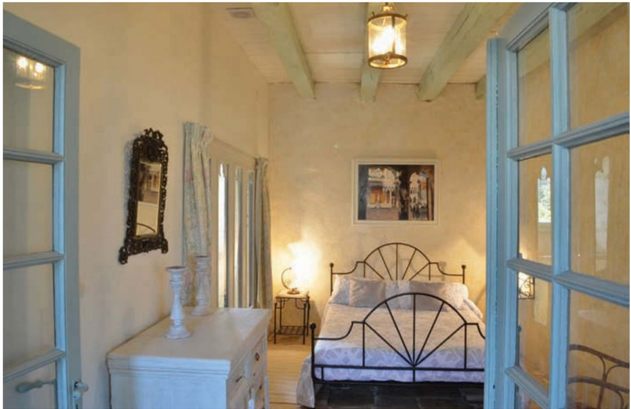
FE: Where did you source the furniture and other items for Le Manoir?
FD: As far as stone features were concerned we kept well away from the local ‘stone dealers’, after hearing many horror stories, including about an owner who was convinced to have three gothic fireplaces ripped out of his medieval house, with disastrous consequences – three chimneys collapsed into his cellar! Sadly, unlike in Britain, buildings in France are neither listed nor protected according to their age. We’ve seen one owner ruthlessly demolishing a superb medieval house featuring an astonished, château-like medieval fireplace and some outstanding carved windows and doors, probably because it no longer fitted with his newly built ungalow and farm buildings. These astonishing features end up on sale in Paris, London or New York and appear in interior magazines – “look at the wonderful French fireplace in this new barn conversion”! We made a point of sourcing everything directly from their original owners, making sure they truly came from houses which were too far gone to be rebuilt and got local stone carvers to work on them.
Regarding furniture and wooden features, we source everything on the internet and during our trips we often come back with, say, a door on our roof rack and a Victorian-style wash basin on the back seat. Sometimes we spare our poor car and rent a van.
FE: Tell us about Le Manoir’s garden…
FD: Since the house dates back to the 16th-century, I thought a Renaissance-style herb garden would be appropriate, one where guests can help themselves to Moroccan mint, oregano, verbena, etc. Since there were scented plants and trees already present, we continued on the theme, adding old roses, honeysuckle, lavender and the astonishing Trachelospermum (‘star jasmine’), which fills the whole garden and the nearby room with scent. We planted hedges and more trees to add privacy and screen nearby buildings.
The garden is now very sheltered and much warmer than our own, which is great for guests but plants and trees do grow quickly and we’re forever attempting to cut them back! Le Manoir is in the Natura 2000 protection zone – there are so many species to be seen or heard, in the garden and by the Dive River, a short walk away. Both factors probably help a lot for repeat bookings.
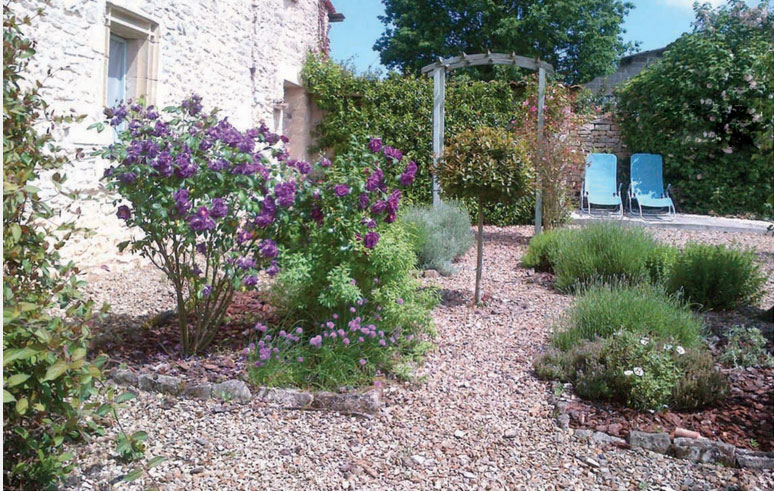
FE: What advice would you give to anyone who’s thinking of buying French property and relocating?
FD: There’s no denying that French property is still so much cheaper than in Britain. France is a big country with lots of space, good roads and railways (when they aren’t on strike!), excellent weather, and delicious food – it must look very tempting. If you come to France with a good pension, I can’t see any serious problems, but if you aren’t in that position, how will you earn a living?
I’m French but I left France when I was a student so I hadn’t experienced this country from a working point of view, nor had I been told how astonishingly difficult it is to be self-employed here, for the simple reason that no-one in my family circle was mad enough to attempt it!
People do need to be aware that French rules and regulations are totally different than in Britain so whatever your plans, do come and talk to people who have already made the jump and check online forums.
If you buy a house that needs to be restored, be aware the costs of renovating have rocketed and it’s vital for you to be aware of the latest legal regulations, particularly regarding heating, plumbing, sanitation, insulation and electricity, otherwise you might have some nasty surprises when it comes to selling it on.
FE: Can you tell us a little about the gîte business you run?
FD: We started running our gîte 12 years ago. Regarding advertising, there was such a colossal choice of small, British-owned websites, offering annual subscriptions around £69/year – £99 was top of the range! Sadly, many of these efficient and friendly online advertising businesses got eaten up by mega, American-owned companies, some quoted on the stock market or hoping that they soon will be. The cost of advertisements rocketed and the quality of service dived.
Visitors’ expectations have gone up – we certainly had to raise our standards and will continue to do so within our ethics. Regarding reviews, the only system that seems fair to us is the Airbnb one, which allow guests to make comments then the owner replies. More vitally, the next potential host has access to the visitor’s profile and reviews, which allows them to decide whether or not they’ll accept their booking. That puts an end to abusive, anonymous reviews. Just the same, we’ve made the firm decision only to advertise our property on ‘small’ websites and are delighted when guests tell us that they used to book only through agencies which ‘checked’ properties but they realise they can trust us and save colossal amounts. We don’t deal with companies which increasingly want to run our business for us, and take a colossal commission in the process – wise potential guests are aware of this too.
I’d advise gîte-owners to have a personal website and if they want to see comments from other proprietors about how they rate the companies that they pay for listings and advertising, then check www.laymyhat.com which is full of good advice!
If you would like some assistance discovering this or other areas and find out more about what the property market has to offer please don’t hesitate to give FrenchEntrée’s Property Team a call on +44 (0) 1225 463752 or email them at [email protected]
View Properties for sale in Poitou-Charentes >>
Originally published in issue 118 of the FrenchEntrée magazine
Share to: Facebook Twitter LinkedIn Email
By FrenchEntrée
Leave a reply
Your email address will not be published. Required fields are marked *

